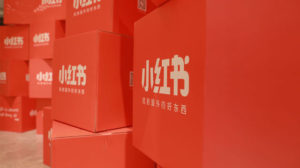China Internet Stats, Trends, Insights
Kaola (Kaola.com), also known as Netease Kaola, was set up by Netease in 2015 to focus on cross-border import retail e-commerce business. Alibaba Group announced the US$2 billion acquisition of Netease’s Kaola e-commerce platform in September 2019.
See a quick guide on Kaola users.
Main competitors: Tmall Global, JD Worldwide, Xiaohongshu, Ymatou.
Kaola History

Kaola e-commerce platform focuses on quality product sourcing and direct selling to consumers.
Kaola.com is one of the top cross-border retail e-commerce platforms in China, set up by NetEase in 2015. It’s the top cross-border retail platform based on total GMV in 2016, according to iiMedia.
Netease Koala’s self-management mode has the right of self-pricing. It can adjust the pricing strategy according to the market environment and competitive environment by coordinating the whole supply chain and all aspects of warehousing, logistics, and operation.
Branches and offices have been set up in nearly 10 countries and regions such as San Francisco, Tokyo, Seoul, Sydney, and Hong Kong to select high-quality products and avoid multi-level links such as agents and distributors.
NetEase Koala has more than 150,000 square meters of bonded warehouses in Hangzhou, Zhengzhou, Ningbo, and Chongqing, ranking first in the industry. At the same time, the 250,000 square meters modern and intelligent bonded warehouse in Ningbo has broken ground and will be put into use shortly.
At present, Koala has become the largest enterprise with bonded warehouses in cross-border e-commerce. In the future, Koala will open bonded logistics centers in South China, North China, and Southwest China.
It leverages the abundant user base and media resources of NetEase and offers high-valuable imported products & services with assured quality.
Kaola.com does large quantities of direct purchasing; and, it can be a channel for the overseas enterprises to introduce their brands into China market rapidly. It has large user groups covering 20-45 years-old, white-collar class with strong buying power.
![]()
Currently, Kaola.com cooperates with a large number of well-known overseas partners, as some shown above. Its main cooperation model is direct purchasing with self-operated, or operated by third-party merchants on its platform.
Kaola.com Users
Kaola.com has user groups mainly covering 20-45 years-old, white-collar class with strong buying power. About half of its users are 24-35 years-old according to Analysis data; and, the majority (70%) are female.
- Below 24: 16%
- 24-30 y-o: 25%
- 31-35 y-o: 24%
- 36-40 y-o: 16%
- Above 40: 18%
Top 10 provinces by transaction value of Kaola.com buyers in 2016 are Zhejiang, Guangdong, Beijing, Jiangsu, Shanghai, Sichuan, Hubei, Fujian, Shandong, and Liaoning.
Registered users on Kaola jumped five-fold to 15 million in 2016 compared with a year ago.
Popular Products on Kaola.com
The top 5 product categories by sales value in 2016 are mother & baby care, skin care & makeup, bags & luggage, health supplement, and personal care. And, top 5 categories with the fastest growth are outdoor, fresh fruit, apparel & shoes, skincare & makeup, and global food.
The popular products of Kaola.com users are generally inexpensive with good quality. Top 5 products in 2016 are N.M.F mask, Merries Baby Diaper, Swisse calcium+vitamin d, Brita jug, and Devondale milk.
Kaola plans to buy US$3.18 billion worth of European products over the next three years, spread across more than 2,000 brands, which it hopes will appeal to high-spending Chinese shoppers.
If you want to work with Kaola, you can go to its website and fill up the form at “Apply for our global partner” section. You can be a B2B supplier (selling to Kaola), set up a store on Kaola.com, or a mixed model of both.











